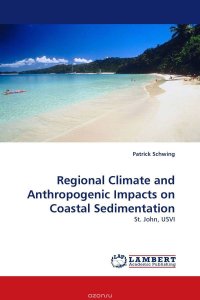Eleven sediment cores collected in salt ponds surrounding St. John document the effect of regional climate on the recent increase of terrestrial sediment input attributed to anthropogenic activities. Increased terrestrial infilling rates in the last 100 years, determined by Lead-210 dating, are a result of increased human activity. Comparing the rate of terrestrial sediment introduced naturally to the current input rate demonstrates the drastic effect of human development on the island""s natural evolution. This study explores regional climate as an additional control on the recent anthropogenically enhanced sedimentation rate. An event in the 210Pb record is evident in every core. This event is most likely a regional-scale precipitation event, possibly a tropical cyclone, which is indicated by the large increase in terrigenous accumulation rate at this interval. The regional climate has been found to be a factor that influences the sedimentation rate due to human development. These results will allow for responsible management and development decisions, which will ultimately aid in eliminating a premature destruction of the natural coastal environment on St. John. Это и многое другое вы найдете в книге Regional Climate and Anthropogenic Impacts on Coastal Sedimentation (Patrick Schwing)
Regional Climate and Anthropogenic Impacts on Coastal Sedimentation Patrick Schwing
Подробная информация о книге «Regional Climate and Anthropogenic Impacts on Coastal Sedimentation Patrick Schwing». Сайт не предоставляет возможности читать онлайн или скачать бесплатно книгу «Regional Climate and Anthropogenic Impacts on Coastal Sedimentation Patrick Schwing»
